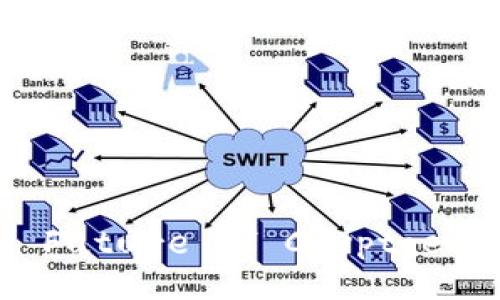Exploring Tokenomics 2.0: The Future of Cryptoeconomics and2025-05-02 07:37:06
Introduction to Tokenomics 2.0
Tokenomics 2.0 represents a significant evolution in the economic models that govern digital tokens in the decentralized finance (DeFi) and blockchain ecosystems. As the cryptocurrency market matures, understanding the underlying economic principles that drive token value and utility becomes vital for participants ranging from developers to investors.
This new phase of tokenomics focuses on creating value-driven ecosystems where tokens leverage their unique properties and functions. The transition from simple token design to more complex economic structures allows for enhanced protocols and applications, ensuring that tokens can fulfill various roles within blockchain networks.
The Importance of Tokenomics in Blockchain

Tokenomics plays a crucial role in defining how a token can be used, distributed, and appreciated over time. It encompasses multiple factors, including the supply mechanics, distribution models, and incentives that align user behavior with network growth.
In the world of cryptocurrencies, a well-structured tokenomics model can lead to an increase in adoption, a flourishing community, and a robust market presence. Conversely, poorly designed tokenomics can lead to a lack of trust, diminished value, and ultimately failure.
Core Components of Tokenomics 2.0
In understanding Tokenomics 2.0, several key components emerge that differentiate it from earlier models:
- Utility vs. Security Tokens: Tokenomics 2.0 emphasizes the distinction between utility tokens, which provide access to a product or service, and security tokens, which are akin to equity and adhere to regulations.
- Incentive Structures: Incentives are crafted to drive user engagement and network effects. This could involve staking rewards, governance rights, or revenue sharing mechanisms.
- Deflationary vs. Inflationary Models: Understanding how tokens will behave in terms of supply is critical. Inflationary models can be structured with mechanisms to control supply while deflationary models can see token burn mechanisms implemented to maintain value.
- Governance: Many Tokenomics 2.0 models integrate decentralized governance mechanisms, allowing token holders to participate in decision-making processes.
Case Studies in Tokenomics 2.0

Several projects exemplify the principles of Tokenomics 2.0:
- Ethereum 2.0: Ethereum’s shift from Proof of Work (PoW) to Proof of Stake (PoS) represents a profound change in what tokenomics means for large-scale cryptocurrencies. The staking mechanism incentivizes holders to maintain their tokens, thus reducing circulating supply.
- Uniswap: The decentralized exchange utilizes tokenomics to incentivize liquidity providers through rewards, creating a self-sustaining ecosystem where users are encouraged to contribute by holding and staking tokens.
Challenges and Considerations
Despite its potential, Tokenomics 2.0 faces various challenges:
- Regulatory Issues: As tokens begin to resemble financial instruments more closely, the regulatory landscape is likely to evolve, affecting how tokens can be structured and used.
- User Education: Many participants may not fully understand tokenomics principles, leading to investment choices that can be misaligned with the project’s goals.
Potential Questions and In-depth Analysis
1. How can projects effectively design their tokenomics models?
Designing an effective tokenomics model requires a deep understanding of the project’s goals, the intended user base, and the competitive landscape. The starting point should revolve around defining the utility of the token. What services or benefits will the token provide? This can dictate how the supply should be controlled and managed.
Next, projects should engage in community feedback during the design phase. Engaging potential users early can provide invaluable insights into what features they find attractive or essential.
Lastly, iterating and adapting the tokenomics model based on real-world usage must be part of the process. Successful projects will monitor use cases, economic activity related to the token, and adapt as necessary.
2. What role do governance mechanisms play in Tokenomics 2.0?
Governance mechanisms are central to ensuring that the token's community has a stake in its future. By giving token holders voting rights, projects can leverage community insights and preferences to guide development and protocol upgrades.
This decentralized governance ensures that power remains in the hands of the community rather than centralized entities, fostering a more engaged user base. It democratizes decision-making processes, which can ultimately lead to sustainable growth and innovation within the ecosystem.
3. What are the risks associated with poorly designed tokenomics?
Poorly designed tokenomics can lead to significant market risks including but not limited to token devaluation, loss of community trust, and regulatory scrutiny. Bad incentives, such as excessive inflation or poorly managed distribution plans, can cause volatility and undermine the token’s value proposition.
For instance, if a project launches with inadequate liquidity or unrealistic expectations about user adoption, it can create a fundamentally fragile ecosystem that collapses under its own weight.
4. How can investors assess the viability of a token’s economics?
Investors should begin by examining the tokenomics model’s foundational principles — clarity of utility, supply mechanics, governance, and incentive structures. Evaluating whether the project has an established roadmap for growth and engagement is crucial. Further, reviewing the community and developer activity can provide insights into the project's health and the likelihood of achieving its objectives.
Additionally, monitoring market trends, including similar projects, can give investors context regarding competitive positioning and potential application challenges.
Conclusion
Tokenomics 2.0 presents a unique opportunity for the evolution of cryptocurrencies and blockchain technology, promising enriched ecosystems, innovative financial models, and greater user engagement. By understanding the principles, challenges, and opportunities presented by Tokenomics 2.0, stakeholders can navigate the complexities of the ever-evolving blockchain arena.